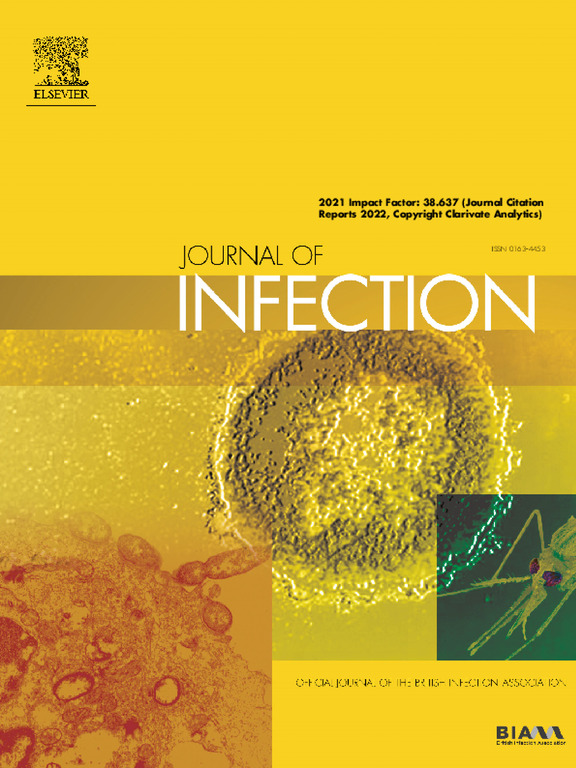Risk of invasive meningococcal disease in people with sickle cell disease: A systematic review
IF 14.3
1区 医学
Q1 INFECTIOUS DISEASES
引用次数: 0
Abstract
Background
Asplenia and splenic dysfunction is associated with an increased risk of severe and fatal infections, especially due to encapsulated bacteria including Streptococcus pneumoniae, Haemophilus influenzae serotype b (Hib) and Neisseria meningitidis. People with sickle cell disease (SCD) develop recurrent splenic infarcts rendering them functionally asplenic. Consequently, additional vaccination against these three pathogens is recommended. There is robust evidence of an increased risk for invasive pneumococcal (IPD) and Hib disease, in people with SCD, but for not invasive meningococcal disease (IMD).
Methods
We conducted a systematic review according to the Preferred Reporting Items for Systematic Reviews and Meta-analysis (PRISMA) recommendations. Studies published in any language before June 2024 and including people with SCD of all ages and from all geographical locations were included. Studies were included if they documented bacterial culture and/or PCR in patients with SCD with suspected infection. The primary outcome was to estimate IMD risk in people with SCD. Secondary outcomes included estimating the risk of IMD and Hib disease in people with SCD.
Findings
We identified 3804 publications and included 86 in the final analyses. Among 74 cohort studies published during 1971–2023, there were three IMD cases among 26,404 persons with SCD compared with 570 IPD and 113 Hib cases. Eight case-control studies published during 1983–2022 reported one IMD case among 932 people with SCD (0.1%) compared to 118 IMD cases among 7143 people without SCD (1.65%). In contrast, there were 126 IPD cases (126/932, 13.5%) in people with SCD compared to 588 (588/7143, 8.2%) in those without SCD. For Hib, the rates were 32/932 (3.4%) and 316/7143 (4.4%), respectively. After including all published studies, we identified five IMD cases in people with SCD across studies published worldwide during 1965–1995 and all five survived their infection.
Interpretation
We found no evidence of any increased risk of IMD in people with SCD. This has important implications for policymakers in countries and organisations that currently recommend meningococcal vaccination for people with SCD.
镰状细胞病患者患侵袭性脑膜炎球菌病的风险:系统综述。
背景:胰腺缺失和脾脏功能障碍与严重和致命感染的风险增加有关,特别是由于肺炎链球菌、流感嗜血杆菌血清型 b (Hib) 和脑膜炎奈瑟菌等包裹细菌引起的感染。镰状细胞病 (SCD) 患者会反复发生脾梗塞,导致功能性无脾。因此,建议额外接种这三种病原体的疫苗。有确凿证据表明,SCD 患者感染侵袭性肺炎球菌 (IPD) 和 Hib 疾病的风险增加,但感染侵袭性脑膜炎球菌疾病 (IMD) 的风险却没有增加:我们根据系统综述和元分析首选报告项目 (PRISMA) 的建议进行了系统综述。我们纳入了 2024 年 6 月之前以任何语言发表的、包括所有年龄段和所有地区的 SCD 患者的研究。如果研究记录了疑似感染的 SCD 患者的细菌培养和/或 PCR,则纳入研究。主要结果是估计 SCD 患者的 IMD 风险。次要结果包括估计 SCD 患者的 IMD 和 Hib 疾病风险:我们确定了 3,804 篇出版物,并将 86 篇纳入最终分析。在 1971-2023 年间发表的 74 项队列研究中,26404 名 SCD 患者中有 3 例 IMD 病例,而 IPD 病例为 570 例,Hib 病例为 113 例。1983-2022 年间发表的 8 项病例对照研究报告称,在 1,021 名 SCD 患者中有 1 例 IMD 病例(0.1%),而在 7,143 名无 SCD 患者中有 118 例 IMD 病例(1.65%)。相比之下,SCD 患者中有 112 例 IPD 病例(112/1021,11.0%),而非 SCD 患者中有 530 例 IPD 病例(530/7143,7.4%)。至于 Hib,发病率分别为 28/1021(2.7%)和 205/7143(2.9%)。在纳入所有已发表的研究后,我们在1965-1995年期间全球发表的研究中发现了5例SCD患者中的IMD病例,这5例病例均在感染后存活下来:我们没有发现任何证据表明 SCD 患者罹患 IMD 的风险会增加。这对目前建议SCD患者接种脑膜炎球菌疫苗的国家和组织的决策者具有重要意义:无。
本文章由计算机程序翻译,如有差异,请以英文原文为准。
求助全文
约1分钟内获得全文
求助全文
来源期刊

Journal of Infection
医学-传染病学
CiteScore
45.90
自引率
3.20%
发文量
475
审稿时长
16 days
期刊介绍:
The Journal of Infection publishes original papers on all aspects of infection - clinical, microbiological and epidemiological. The Journal seeks to bring together knowledge from all specialties involved in infection research and clinical practice, and present the best work in the ever-changing field of infection.
Each issue brings you Editorials that describe current or controversial topics of interest, high quality Reviews to keep you in touch with the latest developments in specific fields of interest, an Epidemiology section reporting studies in the hospital and the general community, and a lively correspondence section.
 求助内容:
求助内容: 应助结果提醒方式:
应助结果提醒方式:


